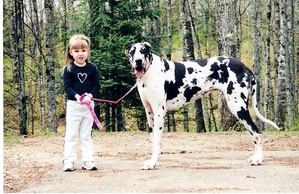We often receive the question from clubs, “Can you send us supplies for collecting samples at our show or health clinic event?” The answer is YES. You may have a cardiac or eye clinic planned and would like to also offer genetic testing at your event. If this is something you and your health committee have discussed or are curious about, read on!
We may not always be available to be on site at your event to facilitate swabbing, but we are happy to provide helpful instructions and materials to make genetic testing at your event as paw-sitive an experience as possible.
What we need from you
Please provide us with your event name and/or club name, the date of your event and whether it is an all-breed show or breed specific. Let us know a general number of how many attendees will be interested in genetic testing their dogs at your clinic or event so we know how many items to send.
We will need your name, email, phone number and an address for shipping supplies.
A volunteer or two who can be present to assist customers in filling out their order form and swabbing their dog ...









